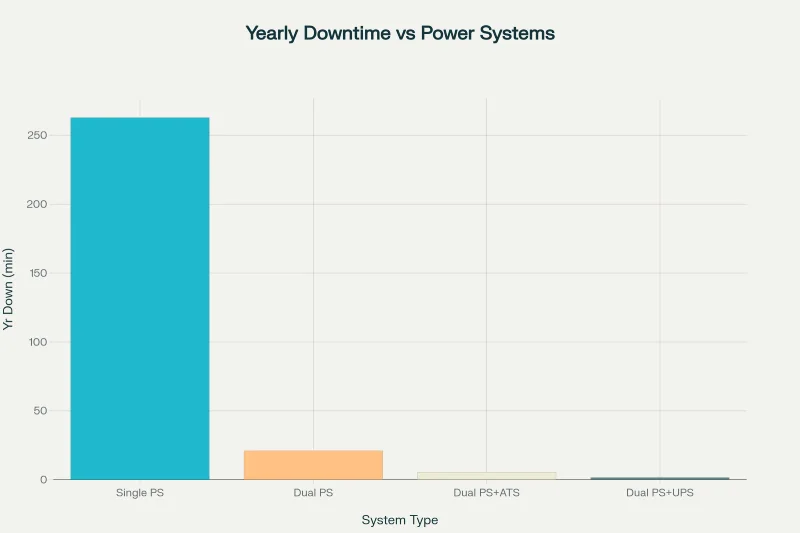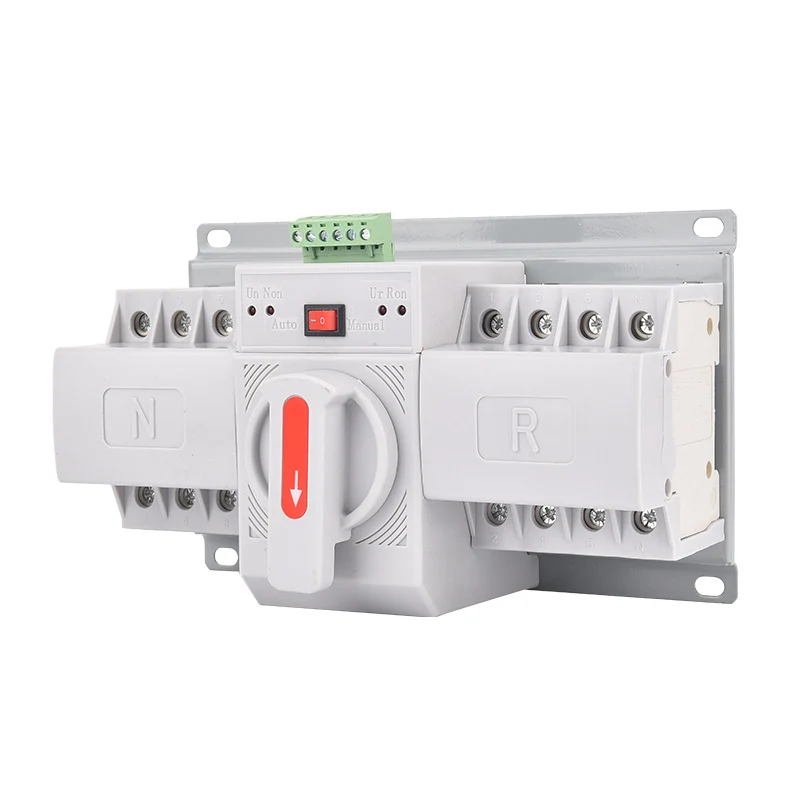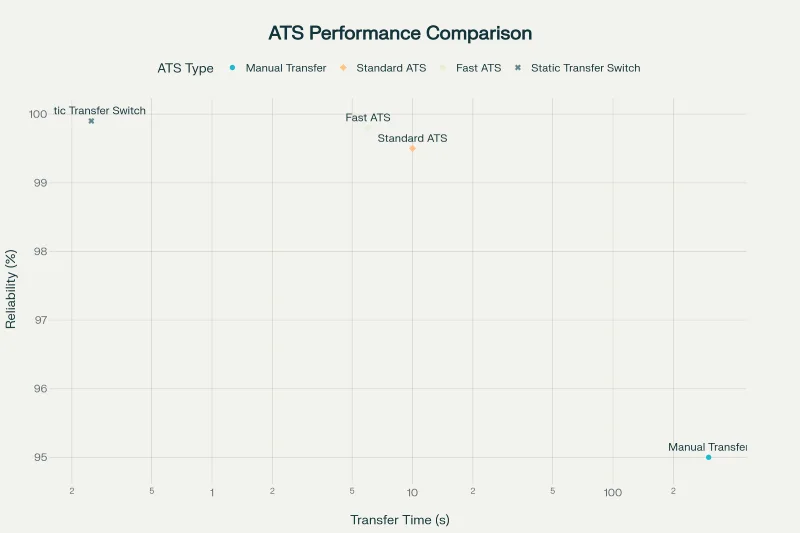Managing two separate power sources through dual power automatic transfer switch systems represents a fundamental advancement in electrical safety and system reliability. This comprehensive analysis examines the mechanisms, benefits, and practical implications of dual power management for critical infrastructure and industrial applications.
Enhanced Safety Through Redundancy and Risk Mitigation
Elimination of Single Points of Failure
The primary safety advantage of dual power systems lies in their ability to eliminate catastrophic single points of failure. Traditional single-source power systems create inherent vulnerabilities where any disruption to the primary power source results in complete system shutdown. Dual power systems address this fundamental weakness by providing an immediate backup source that can seamlessly take over operations when the primary source fails.
Automatic transfer switches (ATS) play a crucial role in this safety enhancement by monitoring both power sources continuously and executing transfers without human intervention. This automation prevents the dangerous delays and human errors associated with manual switching during emergency situations. Healthcare facilities, in particular, benefit significantly from this capability, as evidenced by requirements that emergency power must be available within 10 seconds for life safety systems.
Protection of Critical Safety Systems
Dual power management ensures the continuous operation of essential safety systems that protect both personnel and equipment. Fire protection systems, emergency lighting, communication networks, and evacuation systems all require uninterrupted power to function effectively during emergencies. Research from industrial incidents demonstrates that power failures in safety-critical systems can lead to catastrophic consequences, including chemical releases, equipment damage, and personnel injuries.
The seamless transition capability of modern automatic transfer switches, with response times as fast as 0.25 seconds for static transfer switches, ensures that safety systems remain operational even during the brief transition period between power sources. This rapid response is particularly critical for systems that cannot tolerate even momentary interruptions, such as hospital operating rooms and emergency communication systems.
Compliance with Safety Standards and Regulations
Dual power systems are essential for meeting stringent safety standards across multiple industries. The National Fire Protection Association’s NFPA 110 standard mandates specific requirements for emergency power systems in life safety applications, including transfer times, testing procedures, and maintenance schedules. Healthcare facilities must comply with additional standards that require redundant power sources for critical patient care areas.
Industrial facilities handling hazardous materials are particularly subject to strict dual power requirements, as demonstrated by incidents where power failures led to the release of toxic substances due to failed containment systems. The European Union’s safety directives and similar international standards increasingly require dual power systems for facilities that pose significant environmental or safety risks.
System Stability Enhancement Through Advanced Power Management
Dramatic Improvement in Reliability Metrics
The implementation of dual power systems results in substantial improvements across all key reliability metrics. Analysis of system performance data reveals that Mean Time Between Failures (MTBF) increases from 8,760 hours for single power supplies to 175,200 hours for advanced dual power systems with uninterruptible power supply (UPS) integration. This represents a 20-fold improvement in system reliability, translating directly to enhanced operational stability.
Dual Power System Reliability Comparison: MTBF, Availability, and Downtime Analysis

System availability, a critical metric for mission-critical operations, improves from 99.95% for single power systems to 99.9997% for properly configured dual power systems. This improvement means annual downtime decreases from over 4 hours to less than 2 minutes, providing exceptional operational continuity for critical applications.
Load Balancing and Power Quality Optimization
Dual power systems enable sophisticated load balancing strategies that enhance overall system stability. By distributing electrical loads between multiple sources, these systems can optimize power utilization, reduce stress on individual components, and maintain more consistent voltage and frequency characteristics. This load sharing capability is particularly valuable in industrial environments where large, variable loads can cause significant power quality disturbances.
Advanced dual power systems can also provide power factor correction and harmonic filtering, improving the overall quality of electrical power delivered to sensitive equipment. This enhanced power quality reduces equipment stress, extends operational lifespans, and minimizes the risk of power quality-related failures that could compromise system stability.
Predictive Maintenance and Monitoring Capabilities
Modern dual power systems incorporate sophisticated monitoring and diagnostic capabilities that enable predictive maintenance strategies. These systems continuously monitor power quality parameters, transfer switch performance, and backup power system status, providing early warning of potential issues before they result in system failures. This proactive approach significantly enhances system stability by preventing failures rather than simply responding to them.
Remote monitoring capabilities allow facility managers to track system performance continuously and receive immediate alerts when anomalies are detected. This real-time visibility enables rapid response to emerging issues and supports data-driven maintenance decisions that optimize system reliability.
Technical Mechanisms and Transfer Switch Technologies
Automatic Transfer Switch Performance Characteristics

The effectiveness of dual power systems depends heavily on the performance characteristics of their automatic transfer switches. Different ATS technologies offer varying levels of performance, with transfer times ranging from 300 seconds for manual systems to 0.25 seconds for static transfer switches.
Automatic Transfer Switch Performance: Transfer Time vs Reliability

Static transfer switches represent the most advanced technology, using solid-state switching components to achieve near-instantaneous transfer times while maintaining 99.9% reliability. These systems are particularly valuable for applications requiring uninterrupted power, such as data centers and critical manufacturing processes.
Standard automatic transfer switches, while having longer transfer times of approximately 10 seconds, offer excellent reliability at 99.5% while requiring minimal maintenance. These systems represent the optimal balance of performance and cost for most commercial and industrial applications.
Power Source Integration and Management
Effective dual power management requires careful integration of diverse power sources, including utility feeds, backup generators, and energy storage systems. Modern systems can seamlessly integrate renewable energy sources such as solar photovoltaic systems, creating hybrid power architectures that enhance both sustainability and reliability.
Battery-based uninterruptible power supplies provide additional stability by bridging the gap during transfer operations and providing ride-through capability for brief power disturbances. The integration of multiple technologies creates layered protection that dramatically improves overall system stability and reliability.
Economic Justification and Cost-Benefit Analysis
Sector-Specific Economic Impact of Power Outages
The economic impact of power outages varies dramatically across different sectors, providing clear justification for dual power system investments. Data centers experience the highest impact at \$82,000 per kW-hour of outage, while hospitals face costs of \$41,000 per kW-hour. Even industrial facilities, with relatively lower per-hour costs of \$13.93 per kW-hour, can face substantial losses due to longer average outage durations.
Economic Impact of Power Outages by Sector: Cost per kW per Hour

Commercial facilities experience intermediate but still significant costs, with large commercial operations facing \$16,374 per kW-hour of outage. These high costs reflect the complex interdependencies of modern business operations and the cascading effects of power interruptions on productivity, equipment, and customer relationships.
Return on Investment Analysis
The economic analysis demonstrates compelling return on investment periods for dual power systems across most sectors. Data centers and hospitals typically achieve payback periods of 1-2 months, reflecting both the high cost of outages and the relatively low frequency of extended power disruptions in properly designed dual power systems.
Industrial facilities achieve typical ROI periods of 3 months, while large commercial operations see 4-month payback periods. Even small commercial operations, despite lower absolute outage costs, achieve reasonable 8-month ROI periods due to the relatively modest incremental cost of basic dual power systems.
Long-term Economic Benefits
Beyond the immediate outage cost avoidance, dual power systems provide long-term economic benefits through improved equipment longevity, reduced maintenance costs, and enhanced operational flexibility. The improved power quality and reduced stress on electrical equipment result in longer service lives and lower replacement costs over time.
Insurance considerations also favor dual power implementations, with many insurers offering reduced premiums for facilities with proper backup power systems. These ongoing cost reductions contribute to the long-term economic attractiveness of dual power investments.
Gerçek Dünya Uygulamaları ve Vaka Çalışmaları
Healthcare and Critical Infrastructure
Healthcare facilities represent one of the most demanding applications for dual power systems, where failure can directly impact patient safety and care outcomes. Modern hospitals implement sophisticated dual power architectures that include multiple utility feeds, backup generators, and distributed UPS systems to ensure continuous power for life support, surgical equipment, and critical patient monitoring systems.
Case studies from major medical centers demonstrate the critical importance of proper dual power design and maintenance. Facilities that have experienced power system failures often faced significant consequences, including patient evacuations, cancelled surgeries, and compromised patient care. Properly designed and maintained dual power systems have prevented such incidents even during major natural disasters and grid failures.
Data Centers and Information Technology
Data centers represent another critical application where dual power systems are essential for maintaining service availability and preventing data loss. Modern data center designs typically implement N+1 or 2N redundancy configurations, where backup systems can handle the full facility load even if primary systems fail completely.
The integration of prefabricated modular data centers with built-in dual power systems has emerged as a best practice for healthcare and other critical applications. These systems provide factory-tested reliability and can be deployed rapidly to meet growing capacity demands while maintaining the highest levels of power system redundancy.
Industrial and Manufacturing Applications
Industrial facilities face unique challenges in dual power implementation due to the presence of large, complex loads and the potential for hazardous conditions during power interruptions. Chemical processing plants, refineries, and manufacturing facilities require carefully designed dual power systems that can handle both normal operations and emergency shutdown procedures.
Case studies from petrochemical facilities demonstrate the critical importance of maintaining power to safety systems, pumps, and control equipment during maintenance outages. Temporary dual power solutions, including mobile substations and paralleled generator systems, enable safe maintenance operations while maintaining critical system functions.
Standards, Compliance, and Best Practices
International Standards and Regulations
Dual power systems must comply with a comprehensive framework of international standards that govern safety, performance, and installation requirements. The International Electrotechnical Commission’s IEC 61000 series provides fundamental requirements for power quality and electromagnetic compatibility, while IEC 61000-4-30 specifically addresses power quality measurement methods.
National Fire Protection Association standards, particularly NFPA 110, establish mandatory requirements for emergency power systems in life safety applications. These standards specify testing intervals, maintenance procedures, transfer time limits, and fuel storage requirements that ensure reliable operation when needed most.
Underwriters Laboratories UL 1008 certification is required for automatic transfer switches used in emergency applications, providing assurance that equipment meets rigorous safety and performance standards. IEEE standards, including IEEE C37.90a for surge voltage withstand capability, address additional technical requirements for power system protection and reliability.
En İyi Uygulama Örnekleri
Successful dual power system implementation requires adherence to established best practices that encompass design, installation, testing, and maintenance. Monthly testing of automatic transfer switches is mandated by NFPA 110 and provides essential verification of system readiness. Load bank testing ensures that backup generators can handle actual facility loads under realistic conditions.
Fuel management represents a critical aspect of dual power system reliability, with standards requiring 133% of calculated fuel consumption to be stored on-site. Regular fuel testing and treatment prevent contamination and degradation that could compromise generator performance during emergencies.
Documentation and record-keeping are essential for maintaining compliance and supporting effective maintenance programs. Comprehensive logs of testing, maintenance, and system performance provide the data needed for predictive maintenance strategies and regulatory compliance verification.
Sonuç
The management of two separate power sources through dual power automatic transfer switch systems provides fundamental improvements in both electrical safety and system stability. The elimination of single points of failure, combined with automated switching capabilities, creates robust protection for critical operations and life safety systems. The dramatic improvements in reliability metrics, including 20-fold increases in MTBF and availability levels exceeding 99.999%, demonstrate the technical superiority of properly designed dual power systems.
The economic justification for dual power systems is compelling across most applications, with return on investment periods ranging from one month for hospitals to four months for large commercial facilities. The high costs associated with power outages, particularly in critical sectors like healthcare and data centers, make dual power systems a necessary investment rather than an optional upgrade.
The comprehensive framework of international standards and best practices provides clear guidance for implementing effective dual power systems that meet safety, performance, and reliability requirements. As electrical systems become increasingly critical to modern operations, the implementation of robust dual power management systems represents an essential component of responsible facility design and operation.
The continuing evolution of transfer switch technologies, monitoring systems, and integration capabilities promises even greater improvements in safety and stability for future dual power implementations. Organizations that invest in properly designed and maintained dual power systems position themselves for operational excellence while protecting against the significant risks and costs associated with power system failures.


